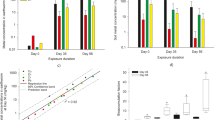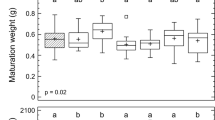Abstract.
Zinc tolerance in Lumbricus rubellus populations from two metal-polluted (smelter and mine) sites was studied by comparing the effects of zinc with responses in a reference site strain. For the study, adult worms were collected directly from the field. Thus, no attempt was made to differentiate between tolerance resulting from population-level genetic adaptation or phenotypic plasticity in metal physiology. To compare relative sensitivity for zinc, worms from the three populations were exposed in laboratory tests. Effects on survival, weight change, cocoon production, and internal zinc levels were measured. Prior to exposure, it was anticipated that worms from the metal-contaminated sites would show substantially increased tolerance to zinc. This was not the case for all measured parameters. Thus, although differences in the shape of the dose-response relationships for survival and cocoon production were found, substantial variations in measured responses, effect concentrations, or zinc accumulation rates were not apparent. Overall, therefore, zinc tolerance is unlikely to be a major factor influencing the distribution of L. rubellus in contaminated regions.
Similar content being viewed by others
Author information
Authors and Affiliations
Additional information
Received: 8 September 1998/Accepted: 21 March 1999
Rights and permissions
About this article
Cite this article
Spurgeon, D., Hopkin, S. Tolerance to Zinc in Populations of the Earthworm Lumbricus rubellus from Uncontaminated and Metal-Contaminated Ecosystems. Arch. Environ. Contam. Toxicol. 37, 332–337 (1999). https://doi.org/10.1007/s002449900522
Issue Date:
DOI: https://doi.org/10.1007/s002449900522




